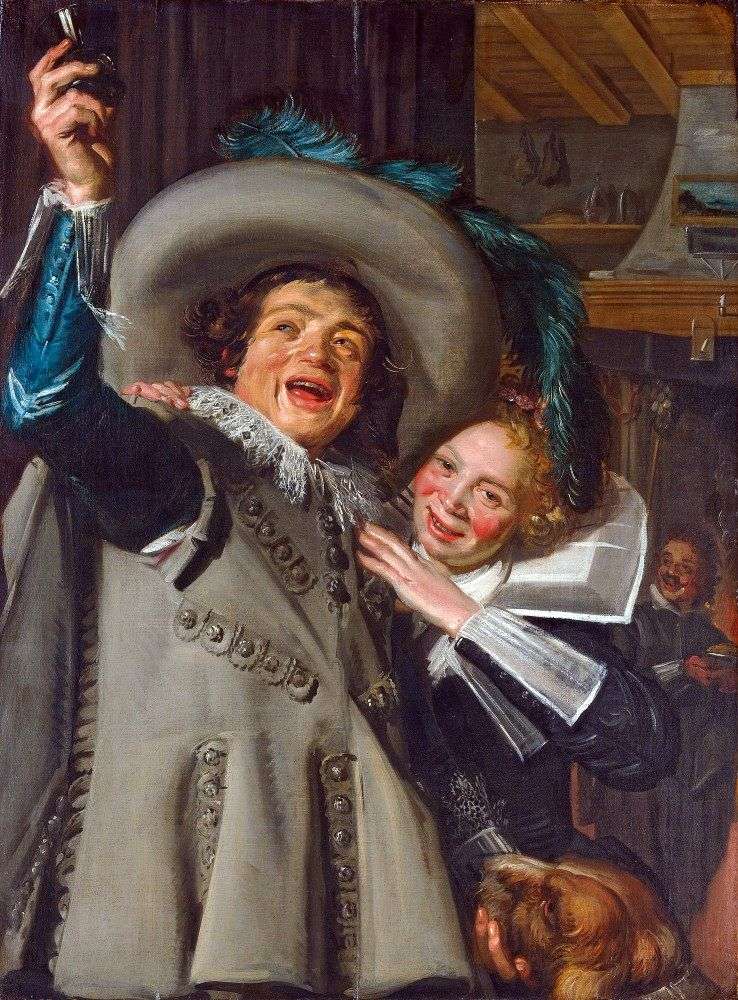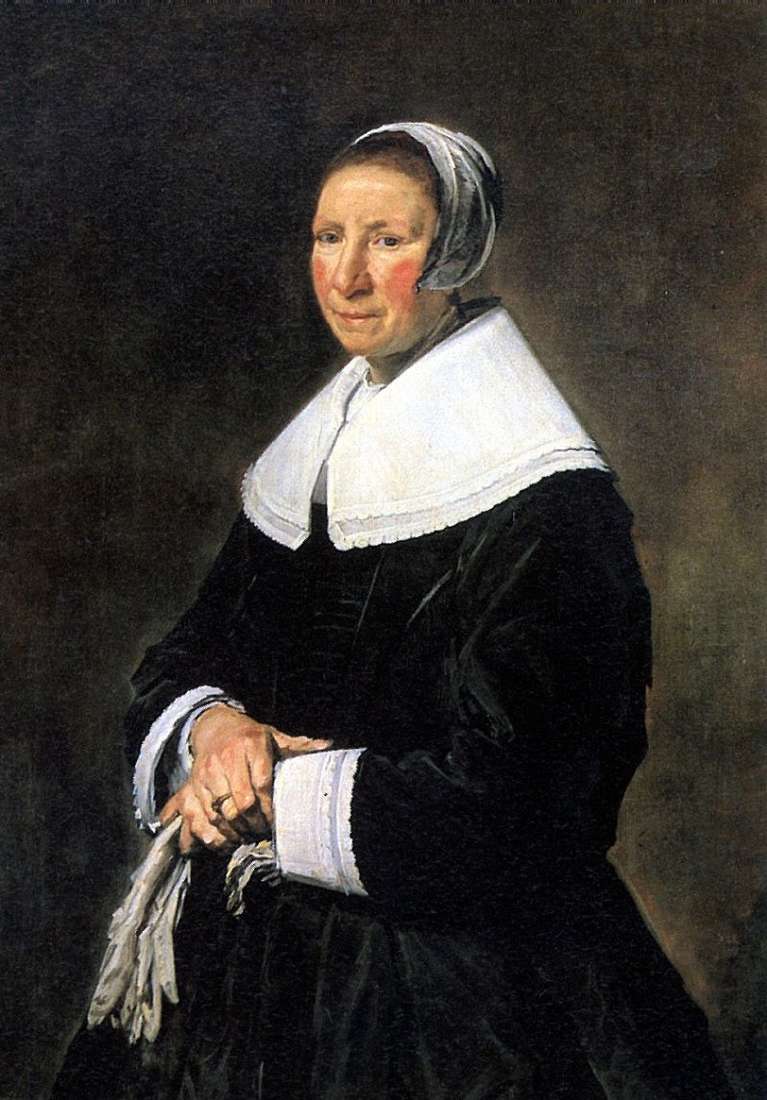
This portrait is one of the most famous in the history of Western European painting. The image created by Hals, bribes the viewer with its freshness and immediacy. It can be seen that the customer – a wealthy and pompous person – is trying to hold on stately. But at the same time he seems to be amused by his position as “portrayed.” The artist very convincingly conveys all the shades of the man’s mood. “Laughing, by the way, the cavalier was named only at the end of the XIX century. Most likely, this is an officer. We can understand this by the tape on the shoulder and the sword at the waist. In addition, it is not difficult to assume that the officer enjoys success with the ladies or, at least with all his strength, seeks to do so. A brazenly broken hat, twirled mustaches, dapper lace cuffs give out in him the real lady’s man. This is one of the most “major” portraits of Khals. He wrote it during the happy period of his life, when fame and a large number of orders allowed him to exist comfortably. About the person portrayed in the portrait, we know almost nothing.
In addition, perhaps he is twenty-six years old and that he is an officer. Then we have only to make assumptions. The first assumption arises by itself. Knowing that Khals was close to the small societies of the city of Haarlem, and in 1624 was a musketeer company of St. George, we will not be too mistaken about the truth, if we say that the “cavalier” was most likely one of the companions of Khals. It is possible that he did not belong to the company of St. George, but was a member of, say, a small company of the St. Adriana. But for us there is not much difference in this. It should be noted that small companies were taken only by wealthy citizens or those recommended by an influential member of the company. The luxurious suit of an officer unambiguously hints at his social position. Probably, this young man belonged to one of the wealthy and respected in the city families. And here it is appropriate to recall that the richest people in Haarlem were owners of weaving manufactories and breweries. The scale of production and consumption of beer in the Netherlands was in the XVII century is such that the teacher Khalsa Karel van Mander called alcoholism “a disease of the Dutch”. By 1618 in the city council of Haarlem 42 of 54 places belonged to the owners of breweries. And Peter Jacobe Olikan, who owned two of the largest breweries in the city, was re-elected five times to the post of burgomaster.
In favor of the “brewing” version of the origin of “cavalier” says that the brewers were the indispensable members of the rifle societies and were among the regular customers of Hals. For example, four of the largest paintings, painted by the artist in 1627-39, they ordered it. The sleeve of the “Smiling Chevalier” is written by Khals with great skill. The artist has achieved striking contrasts here – hot yellow, golden and red embroidery elements protrude against the dark fabric of the jacket. The white lace of the wide cuff Khals reproduces so scrupulously that the viewer not only sees, but also almost touches every detail of the pattern. There is no doubt that only the most skilled craftsmen could make such laces, and they probably cost a fortune. Daredevil-officer with pleasure displays his extravagant costume, even a little vanity. The Haarlem manufactories produced rich fabrics in abundance. Camisols from such a fabric in the times of Khalsa were decorated with embroidered embroidery, which shows, for example, that the heart of the owner of this jacket belongs to this or that lady.
One can say with certainty that Khals was familiar with the popular in that era Alikati book “Emblematics”, in which the serpent-wielded god of Mercury denoted the Latin motto “Virturi fortuna comes”. It was the emblem of Mercury that the artist pictured between the slots of the sleeve of the gentleman. Carefully examining the sleeve, we can distinguish two main types of smear. So, a wide orange-gold strip on the cuff of the sleeve is written with a broad brush, vigorous strokes. Embroidery, on the other hand, is written with a fine brush, and here the artist very carefully wrote out literally every stitch.
 Merry drinking companion by Frans Hals
Merry drinking companion by Frans Hals Portrait of Willem van Heitheissen by Frans Hals
Portrait of Willem van Heitheissen by Frans Hals Cavalier Ramp y su amante – Frans Hals
Cavalier Ramp y su amante – Frans Hals Male portrait by Frans Hals
Male portrait by Frans Hals The Regents of the Harlem Almshouse by Frans Hals
The Regents of the Harlem Almshouse by Frans Hals Portrait of a Woman by Frans Hals
Portrait of a Woman by Frans Hals Cavalier Ramp and his lover by Frans Hals
Cavalier Ramp and his lover by Frans Hals Cavalier Rump et son amant – Frans Hals
Cavalier Rump et son amant – Frans Hals